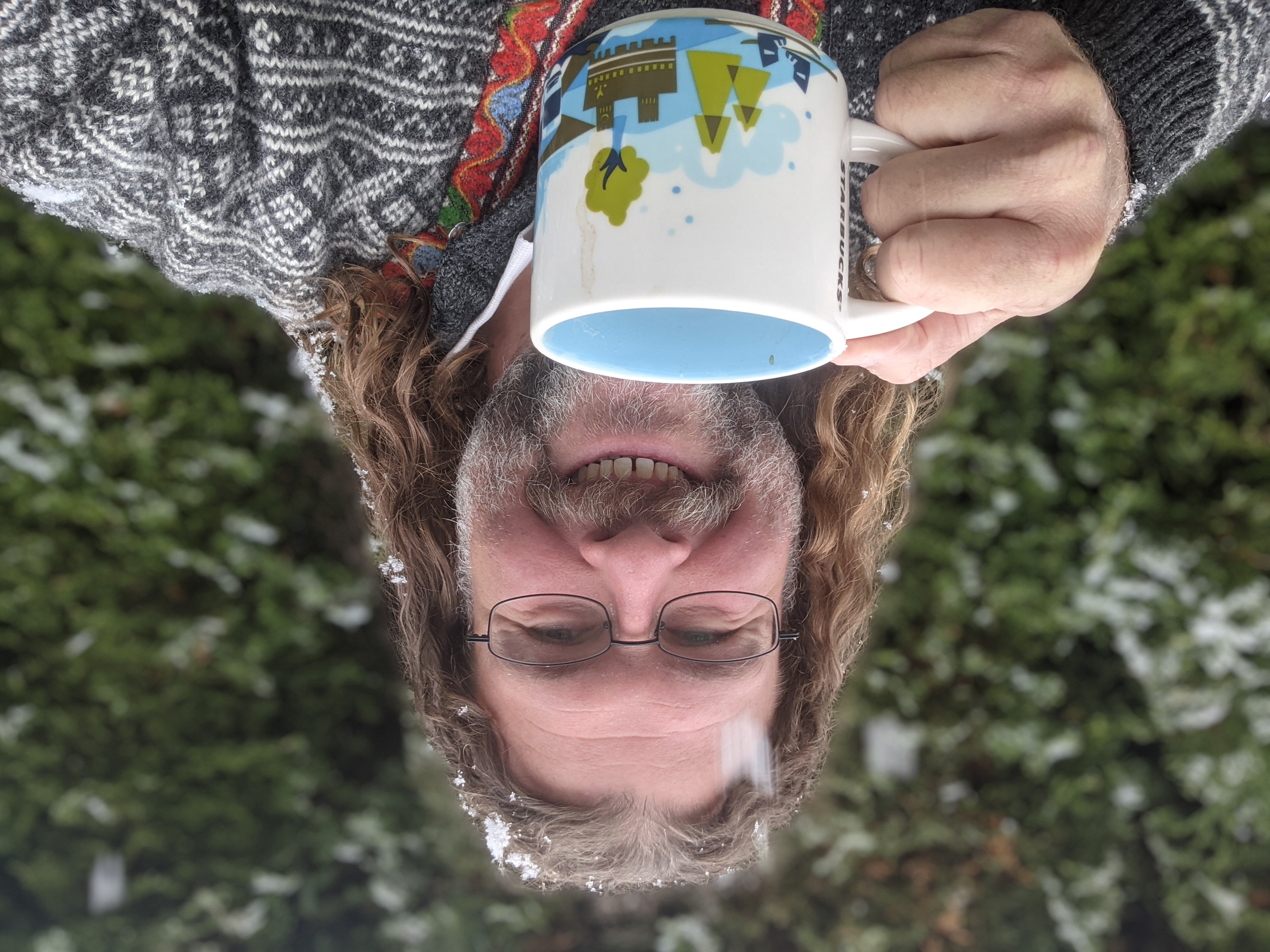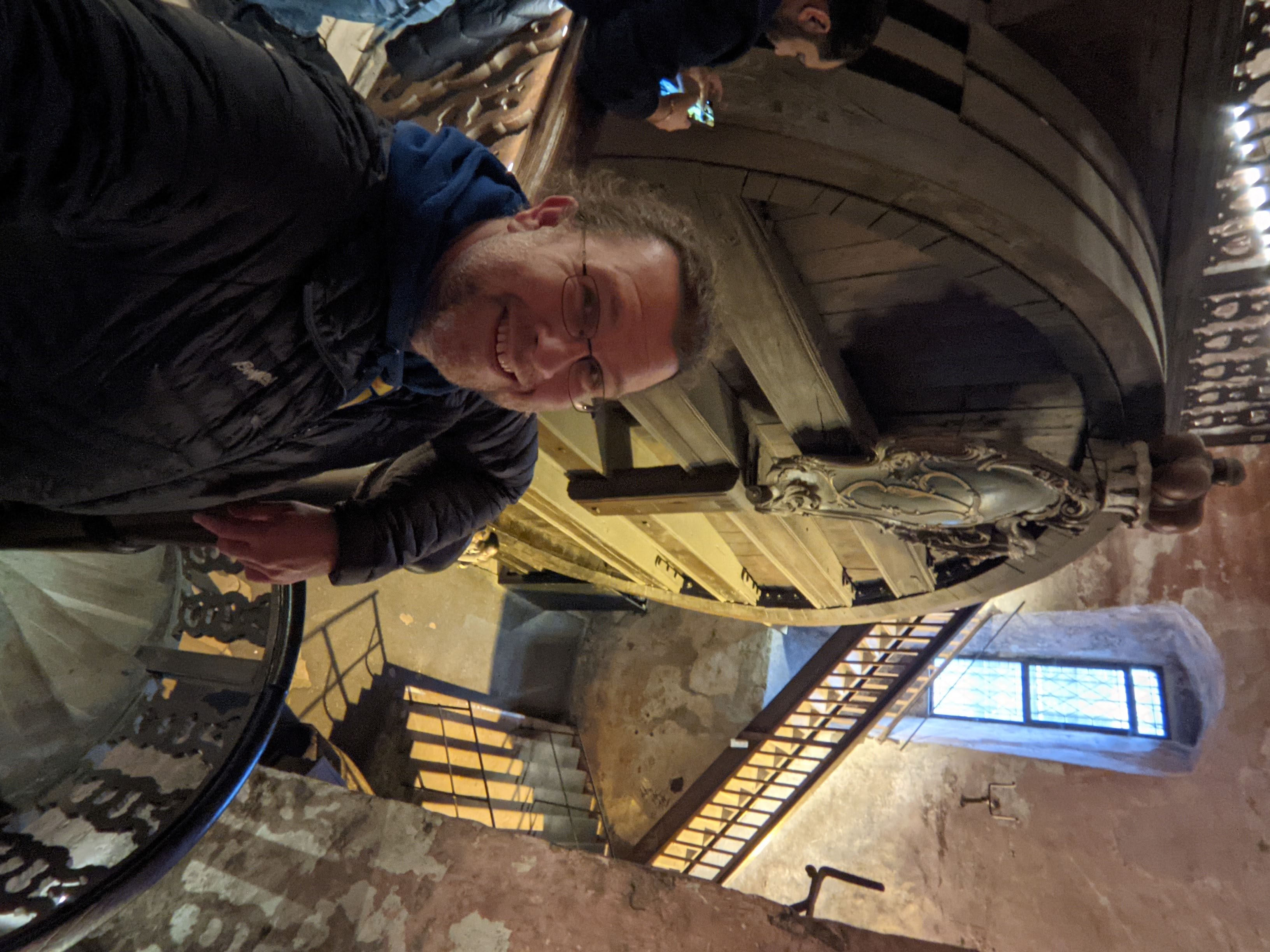Heidelberg |

|
7 January 2024 - Heidelberg
Eddie woke me up this morning with face kisses instead of his usual pawwing. He knows that I'm the one to take them on their morning walk, so when he needs to pee he starts to annoy me. It felt early, but looking at my watch it was already seven. At home sunrise is around 8:15, but this weekend we're several hours drive to the north in the German city of Heidelberg. Heidelberg has been a university town since 1386, and today about a quarter of residents are students so it's quite lively in the evening. As I walked the dogs the dogs this morning though the streets were dead quiet. This was in contrast to the Polish university town of Wrocław, where the students were still drinking at bars when I walked the dog there at 7AM on the weekend.
Coming here was a spur of the moment decision. Heidelberg is about 3 hours north of Zürich where the Neckar River comes out of the mountains onto the flat plain created by the Rhine River. Today this is about 30 kilometers from the Rhine, but such large rivers meander across their valleys. Heidelberg is thus a natural city although it was superseded by Mannheim, which is actually where the Neckar meets the Rhine, several centuries ago. This is also because of the futility of fixed fortifications in the age of gunpowder. The Schloß overlooking Heidelberg is something to behold, but it didn't withstand the French onslaught in 1693. They blew up the towers and the resulting fire destroyed many of the other buildings. And the kings who had reigned from Heidelberg built a new palace in Mannheim. The end of castles was a sea change for this area, which had a hillfort built by the Celts thousands of years of years before the Schloß. It's not mentioned in Caesar's De Bello Gallico, but I certainly wouldn't have felt safe on the open plain after watching the Roman army build a bridge across the Rhine and then burn it after their army had finished crossing.
Kings may have left Heidelberg Schloß mainly in ruins, but in the 19th century Romantics (the literary ones, like the Jena set) saw the beauty of the ruin and began raising money to preserve it as such. Again I have to draw contrast to Poles, who completely rebuilt the Marienburg fortress (which they call Malbork) after it was destroyed during WWII. When our tour guide at the Schloß bragged that it was the biggest castle in Germany, I resisted them temptation to point out that that's because Malbork and Colmar aren't in Germany anymore. Go out trying to conquer the world and it may conquer you back...
Once the Romantics started writing about and painting the castle it because a tourist destination, including for the 19th century's most famous tourist, Mark Twain. In A Tramp Abroad he details his trip down the Neckar including a stop at Heidelberg Schloß. Having mentioned the largest wine barrel in the world was stored there, generations of American tourists have trekked to see it. Literature ever captivates our imagination.

The barrel, however, was not the reason we came to Heidelberg. Iwona's sister Jola had a trip planned here with some of her old school friends who unfortunately got sick. So, even though she'd spent the Christmas holiday at our house and left just a week ago, we came up to join Jola so she didn't have to vacation alone. After seeing the Schloß in the afternoon we went to an organ concert by a gift young organist, Thorsten Grasmück, who's Maxwell's age. It's a different part of life to get used to. This is a young town though. At 44 I'm still the age of the average European. And in Deutschland the average is 46 already.
Today I took the dogs hiking up to Königstuhl while the women explored the Altstadt. Along the way I found some surprising things....
